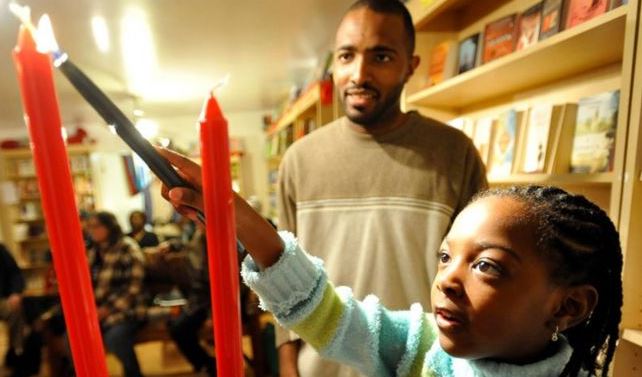Many big celebrations and festivals take place in the last few months of the year, including Indian Diwali, Jewish Hanukkah, and Christian Christmas, but have you ever heard of Kwanzaa?
Created by activist and writer Maulana Karenga in 1966, Kwanzaa is a holiday celebrated by some African-Americans from December 26 to January 1.
The festival’s name comes from the phrase “matunda ya kwanza,” which means “first fruits” in Swahili, a language spoken in several East African countries, including Kenya, Uganda, Rwanda, Malawi, Burundi, and Tanzania.
Kwanzaa is considered a celebration of life and is a way for members of the black community in the United States to come together and celebrate their roots and culture.
Why was the Kwanzaa born?
The Karenga created the Kwanzaa after the Watts riots that took place in 1965 in California.
At the time, Watts was a largely black neighborhood in Los Angeles, whose residents suffered from extensive racial discrimination. Violent clashes broke out between the police and those who lived in the neighborhood.
The riots began after the attempted arrest of a young black man named Marquette Frye for driving under the influence of alcohol. That led to incidents that ended in several days of riots.
The balance was 34 dead, some 1,000 injured and more than US$40 million in property damage.
Karenga was deeply affected by the riots and wanted to find a way to bring his community together after the devastating event.
Therefore, in 1966 he introduced a non-religious holiday called Kwanzaa, with the goal of giving African-Americans the opportunity to celebrate their African history and culture.
Karenga spent time researching African harvest traditions, bringing together parts of different festivals to form what is known today as Kwanzaa.
How is Kwanzaa celebrated?

Seven is an important number for those who celebrate Kwanzaa. The holiday lasts for seven days, there are seven key symbols, and there are also seven main principles.
During the Kwanzaa, families and communities come together to participate in activities based on the seven principles, a different one each day.
The festivity also includes storytelling, lots of food shared among family and friends, singing, dancing, music including African drumming, gift-giving, and poetry readings.
Similar to the Jewish Hanukkah, the candles are lit during the Kwanzaa. Seven candles are placed in a special candle holder known as a kinara, with three red candles on the left, three green candles on the right, and a single black candle in the middle.
The black candle is lit first and then the remaining candles are lit from left to right throughout the week.
Both the kinara and the seven candles (mishumaa saba) are two of the seven symbols of Kwanzaa along with crops (mazao), a placemat (mkeka), an ear of corn (muhindi), the cup of unity (kikombe cha umoja) and gifts (zawadi).
What are the seven principles of Kwanzaa and what do they mean?
Kwanzaa is based on seven key principles or ideas which include:
- Unity (Umoja): Focuses on the importance of working and maintaining unity among family members, the black community in the US, and the country.
- Self-Determination (Kujichagulia): stresses the importance of people defining themselves, naming themselves, believing for themselves, and speaking for themselves.
- Collective work and responsibility (Ujima): build and maintain the community and help others to solve their problems.
- Cooperative Economy (Ujamaa): Creation and management of African-American community stores and businesses from which they can benefit together.
- Purpose (As): Build and develop people and make them great again.
- Creativity (Kuumba): doing what each one can to leave the community more beautiful and beneficial than the one they inherited.
- Faith (Imani): Believing in others, including parents, teachers, leaders, and the struggle of the African American people.

